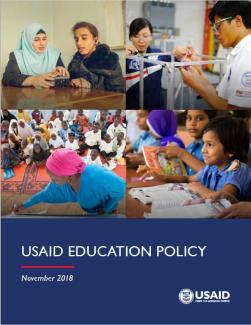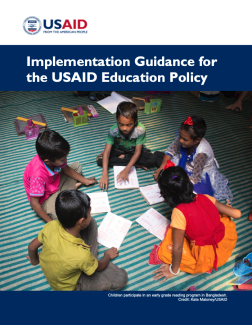The USAID Education Policy, released in November 2018, provides an Agency-wide vision and direction for supporting partner countries in strengthening their capacity to deliver quality learning opportunities for children and youth.
The primary purpose of programming in education by USAID is to achieve sustained, measurable improvements in learning outcomes and skills development. The policy applies to education programming across all levels (from pre-primary through higher education), contexts (stable contexts to crisis and conflict-affected environments), settings (formal and non-formal), and providers (state and non-state).
The principles laid out in the policy drive decision-making for new education investments supporting the vision that partner country education systems must enable all children and youth to acquire the education and skills needed to be productive members of society:
- Prioritize country-focus and ownership
- Focus and concentrate investments on measurably and sustainably improving learning and educational outcomes
- Strengthen systems and develop capacity in local institutions
- Work in partnership and leverage resources
- Drive decision-making and investments using evidence and data
- Promote equity and inclusion
The priority areas laid out in the policy serve as a general framing and orientation for USAID’s work in education. These priorities illustrate key areas that are critical to supporting countries on their journey to self-reliance:
- Children and youth, particularly the most marginalized and vulnerable, have increased access to quality education that is safe, relevant, and promotes social well-being.
- Children and youth gain literacy, numeracy, and social-emotional skills that are foundational to future learning and success.
- Youth gain the skills they need to lead productive lives, gain employment, and positively contribute to society.
- Higher education institutions have the capacity to be central actors in development by conducting and applying research, delivering quality education, and engaging with communities.
The Education Policy is accompanied by Program Cycle Implementation and Operational Guidance that provides information on operational aspects of the policy, including key considerations throughout the program cycle, Agency-level monitoring and reporting, budget and funding parameters, and other areas. This guidance assists Missions in practically applying the principles and achieving the priorities outlined in the USAID Education Policy.
In addition, other education good practice documents and related evidence to support programming can be accessed on EducationLinks.


